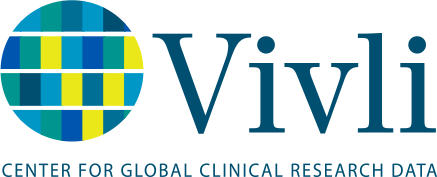Lead Investigator: Rifaquat Rahman, Dana Farber Cancer Institute
Title of Proposal Research: Evaluation of Differences in Trial and Non-Trial Patients and Leveraging of External Data for More Efficient Clinical Trial Designs in Newly Diagnosed Glioblastoma
Vivli Data Request: 6739
Funding Source: None
Potential Conflicts of Interest: None
Summary of the Proposed Research:
Glioblastoma (GBM) is an aggressive primary central nervous system tumor, and it is the most common primary malignant brain tumor in adults. There is a critical need for better therapies, as GBM continues to be associated with a dismal prognosis despite maximal therapy with surgery, radiation therapy and chemotherapy. While there have been some improvements in understanding the molecular pathways underlying GBM, there have been very few advances in the treatment of GBM in the last two decades.
In glioblastoma, the current clinical trial landscape is felt to be suboptimal for the development of new therapies, and there is a significant need for both better therapies and for a better system for testing and developing such therapies. Given these issues, glioblastoma has a dismal success rate in resource-intensive, time-consuming phase III trials with only one successful trial in the last several decades. Many failures in drug development in glioblastoma have been attributed to the overestimation of the treatment effect in early phase studies.
I. Trial Effects
While most oncologists believe that patients with cancer who enroll in clinical trials have better outcomes, scant evidence exists on whether there is an effect of trial participation itself on outcome (i.e. a trial effect). Of note, the largest limitation in the reviewed studies was inconsistent and insufficient strategies to control for potential confounders. There are broad efforts to improve clinical trial participation in GBM, but better understanding of patient characteristics, tumor-related factors and clinical outcomes among clinical trial and non-trial patients is important to provide insight into steps to increase this.
II. Incorporating External Data into Trial Designs
While early phase randomized controlled trials have been suggested as a possible solution, they require larger sample sizes, longer enrollment periods, and discourage patients who do not want to be randomized to a control arm There is increasing interest in using data from outside of clinical trials to replace or support controls within trials. The methodological development underpinning these “external control arms” is unclear, however. The rationale for this project is to develop an external control arm for clinical trials of newly diagnosed GBM and test the viability of such an approach given GBM-specific details such as endpoint variability in progression-free survival (PFS), overall survival (OS), and relevant prognostic factors.
This research can have a tremendous impact in the field of neuro-oncology. It will allow us to explore a type of trial design that could significantly accelerate the progress in glioblastoma to find more effective therapies faster and more efficiently. It will also help clinicians better understand how to interpret and contextualize clinical trials by comparing clinical trial patients with non-trial patients.
Requested Studies:
A Randomized, Double-Blind, Placebo-Controlled, Multicenter Phase III Trial of Bevacizumab, Temozolomide and Radiotherapy, Followed by Bevacizumab and Temozolomide Versus Placebo, Temozolomide and Radiotherapy Followed by Placebo and Temozolomide in Patients With Newly Diagnosed Glioblastoma
Data Contributor: Roche
Study ID: NCT00943826
Sponsor ID: BO21990
Cilengitide in Subjects With Newly Diagnosed Glioblastoma and Unmethylated MGMT Gene Promoter – a Multicenter, Open-label Phase II Study, Investigating Two Cilengitide Regimens in Combination With Standard Treatment (Temozolomide With Concomitant Radiation Therapy, Followed by Temozolomide Maintenance Therapy). [The CORE Study]
Data Contributor: Project Data Sphere
Study ID: NCT00813943
Sponsor ID: EMD121974-012
Cilengitide for Subjects With Newly Diagnosed Glioblastoma and Methylated MGMT Gene Promoter – A Multicenter, Open-label, Controlled Phase III Study, Testing Cilengitide in Combination With Standard Treatment (Temozolomide With Concomitant Radiation Therapy, Followed by Temozolomide Maintenance Therapy) Versus Standard Treatment Alone (CENTRIC)
Data Contributor: Project Data Sphere
Study ID: NCT00689221
Sponsor ID: EMD 121974-011

